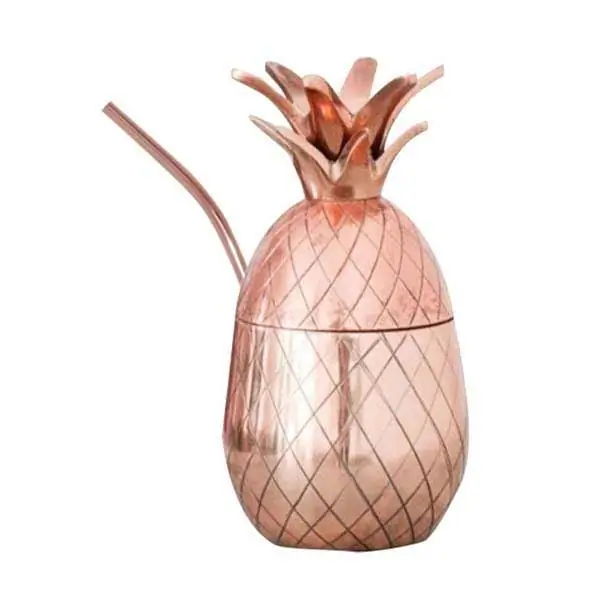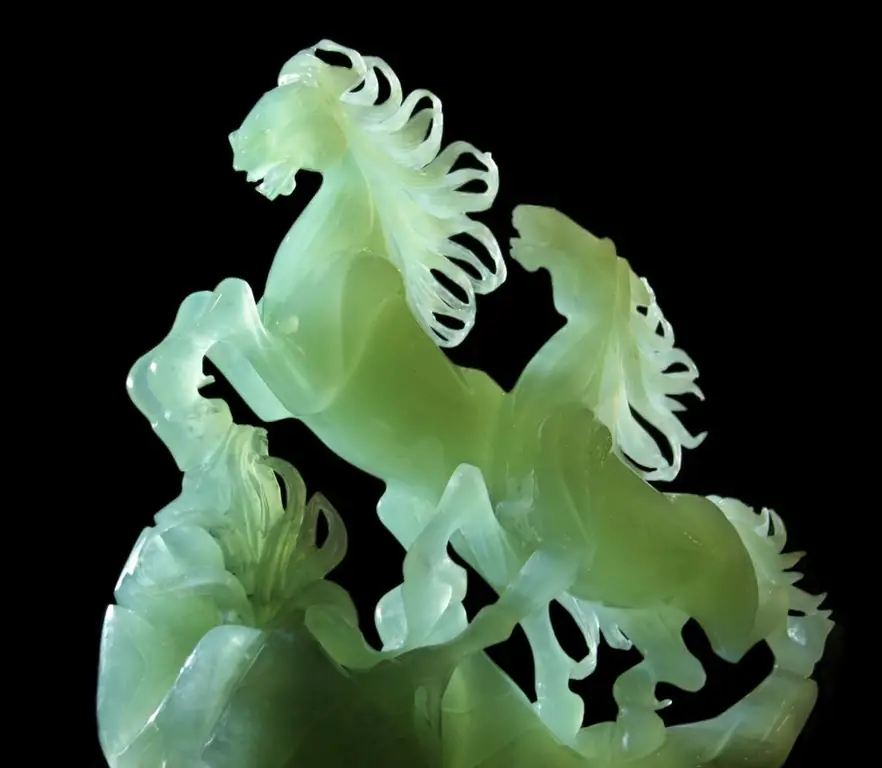2026 Author: Howard Calhoun | [email protected]. Last modified: 2025-01-24 13:10:31
Copper today is an unusually demanded metal and is widely used both in everyday life and in industry. Cu can be found in nature both in its pure state and as an ore. There are several ways to extract and obtain copper from the original rocks. However, they are widely used in industry. How copper is mined will be discussed in the article.
A bit of history
In what area copper in ancient times began to be mined and used by man for the first time, archaeologists, unfortunately, could not find out. However, it is known for certain that it was this metal that people began to process and use in everyday life the very first.

Copper has been known to man since the Stone Age. Some nuggets of this metal found by archaeologists bear traces of processing with stone axes. Initially, people used copper mainly as jewelry. At the same time, people in ancient times used exclusively the nuggets of this metal found by them for the manufacture of such products. Later, people learned to process andcopper-bearing ore.
An idea of how Cu is mined and processed was shared by many peoples of antiquity. A lot of evidence has been found by archaeologists. After man learned to make alloys of copper and zinc, the Bronze Age began. Actually, the name "copper" was once coined by the ancient Romans. Such metal was brought to this country mainly from the island of Cyprus. That's why the Romans called it aes cyprium.
How copper was mined in ancient times
Since this metal was once used very widely in human life, the technologies for its extraction were, of course, developed quite perfect. Our ancestors obtained copper mainly from malachite ores. A mixture of such material and coal was placed in an earthen vessel and placed in a pit. Next, the mass in the pot was set on fire. The resulting carbon monoxide reduced malachite to copper.
Stocks in nature
Where can copper be found in the wild today? At the moment, deposits of this popular metal are discovered on all continents of the Earth. At the same time, Cu reserves are considered practically unlimited. Geologists in our time are finding new deposits of pure copper, as well as ores containing it. For example, in 1950 the world reserves of this metal amounted to 90 million tons. By 1970, this figure had already increased to 250 million tons, and by 1998 - up to 340 million tons. At the moment, it is believed that copper reserves on the planet are more than 2.3 billion tons.
Deposits and methods of extraction of pure copper
As already mentioned, initially people used native Cu in everyday life. Of course, it is obtainedsuch pure copper today. Nuggets of this metal are formed in the earth's crust as a result of exogenous and endogenous processes. The largest known deposit of native copper on the planet is currently located in the United States, in the Lake Superior region. In Russia, native copper occurs in the Udokan deposit, as well as in some other places in Transbaikalia. In addition, the answer to the question of where copper can be mined in Russia in the form of nuggets is the Ural region.

In nature, pure metal of this variety is formed in the oxidation zone of copper sulfate deposits. Usually, nuggets of copper itself contain about 90-99%. The rest is accounted for by other metals. In any case, two main technologies serve as an answer to the question of how native copper is mined. Such deposits, as well as ore ones, are developed by a closed mine or open pit method. In the first case, such technological processes as drilling and breaking are used.
Copper nuggets can weigh a lot. The largest of them were once found on Lake Superior in the USA. The weight of these nuggets was about 500 tons.
Where copper is mined in Russia, we found out. This is mainly Transbaikalia and the Urals. In our country, of course, very large nuggets of this metal were also found at different times. For example, copper pieces weighing up to several tons were often found in the Middle Urals. One of these nuggets weighing 860 kg is now kept in St. Petersburg, in the Museum of the Mining Institute.
Copper ores and their deposits
Currently, obtaining Cu is considered cost-effective and expedient even if it is contained in the rock at least 0.3%.
Most often, the following rocks are mined for the extraction of copper in nature in an industrial way:
-
bornites Cu5FeS4 - sulfide ores, otherwise called copper purple or variegated pyrites and containing about 63.3% Cu;
-
chalcopyrite CuFeS2 - minerals of hydrothermal origin;
-
chalcosines Cu2S containing more than 75% copper;
-
cuprites Cu2O, also often found in native copper deposits;
- malachites, which are carbonic copper greens.
The largest copper ore deposit in Russia is located in Norilsk. Also, such rocks are mined in large quantities in some places in the Urals, in Transbaikalia, in Chukotka, in Tuva and on the Kola Peninsula.

How copper ore deposits are developed
Different kinds of rocks containing Cu, as well as nuggets, can be mined on the planet using two main technologies:
- closed;
- open.
In the first case, mines are built at the deposit, the length of which can reach several kilometers. To move workers and equipment, such underground tunnels are equipped with elevators and railway tracks. Rock crushing in mines is carried out usingspecial drilling equipment with spikes. The collection of copper ore and its loading for shipment to the top are carried out using buckets.
If the deposits are located no further than 400-500 m from the surface of the earth, they are mined using an open method. In this case, the upper rock layer is first removed from the field using explosive devices. Further, the copper ore itself is gradually removed.

Methods for obtaining metal from rocks
How copper is mined, or rather, ores containing it, we thus found out. But how do enterprises subsequently receive Cu itself?
There are three main ways to extract copper from rocks:
- electrolytic;
- pyrometallurgical;
- hydrometallurgical.
Pyrometallurgical flotation method
This technology is commonly used to isolate copper from rocks containing 1.5-2% Cu. Such material is enriched by the flotation method. At the same time:
- ore is thoroughly ground to the finest powder;
- mix the resulting material with water;
- add special flotation reagents, which are complex organic substances, to the mass.
Flotation reagents coat small grains of various copper compounds and impart non-wettability to them.
Next step:
- substances that create foam are added to the water;
- pass a strong stream of air through the suspension.
Light dry particles of copper compounds as a result stick to air bubbles and float to the top. The foam containing them is collected, squeezed out of water and dried thoroughly. As a result, a concentrate is obtained, from which crude Cu is then isolated.

How copper is mined from ore: beneficiation by roasting
The flotation method is used quite often in industry. But sometimes roasting technology is also used to enrich copper ore. This technique is most often used for ores containing a large amount of sulfur. In this case, the material is preheated to a temperature of 700-8000 °C. As a result, sulfides are oxidized with a decrease in the sulfur content in the rock.
At the next stage, the ore prepared in this way is melted in shaft furnaces at a temperature of 14,500 °C. Ultimately, when using this technology, a matte is obtained - an alloy of copper and iron. Further, this connection is improved by blowing in converters. As a result, iron oxide goes into slag, and sulfur goes into SO4.
Producing pure copper: electrolysis
When using flotation and roasting methods, blister copper is obtained. Actually, such a material contains about 91% Cu. To obtain purer copper, rough copper is further refined.
In this case, thick anode plates are first cast from primary copper. Next:
- pick up a solution of copper sulfate in the bath;
- hanging in the bathroomanode plates;
- thin sheets of pure copper are used as cathodes.
During the electrolysis reaction, copper is dissolved on the anodes and precipitated on the cathodes. Copper ions move towards the cathode, take electrons from it and pass into Cu+2+2e atoms?>Cu.

Impurities contained in blister copper can behave differently when refined. Zinc, cadmium, iron dissolve on the anode, but do not settle on the cathode. The fact is that in the series of electrochemical voltage they are to the left of copper, that is, they have more negative potentials.
Copper sulfate is obtained by slow oxidation of sulfide ore with oxygen to copper sulfate CuS + 2O2 > CuSO4. The s alt is subsequently leached out with water.
Hydrometallurgical method
In this case, sulfuric acid is used to leach and enrich copper. As a result of the reaction using this technology, a solution saturated with Cu and other metals is obtained. Copper is then isolated from it. Using this technique, in addition to blister copper, other metals, including precious ones, can be obtained. In any case, this technology is most often used to extract Cu from rocks that are not too rich in it (less than 0.5%).
Copper at home
Separation of this metal from ores saturated with it is, therefore, relatively simple technologically. Some are therefore interested in how to mine copper at home. Get this metal from ore, clay, etc. with your own hands, withoutavailability of special equipment, however, will be very difficult.

Some, for example, are interested in how to extract copper from clay with their own hands. Indeed, in nature there are deposits of this material, which is also rich in Cu. However, unfortunately, there are no known proven technologies for obtaining copper from clay at home.
With your own hands, this metal at home can be tried to isolate, perhaps, only from copper sulphate. To do this, the latter must first be dissolved in water. Further, in the resulting mixture, you should simply place some iron object. After some time, the latter - as a result of the substitution reaction - will be covered with a copper coating, which can then be simply cleaned off.
Recommended:
Copper ore: mining, refining, deposits and interesting facts

Copper is quite widely used in almost any of the existing industries, it stands out from a variety of ores because it is the most in demand. copper ore is a natural resource derived from an ore called bornite that is often used in industry. Great demand for this ore appeared not only due to the large amount of copper in the composition, but also due to the good reserves of bornite in the ground
Frozen deposits of Sberbank. Can deposits be frozen? How secure are deposits in Russian banks?

The frozen deposits of Sberbank in 1991 are systematically paid out by a financial institution. The bank does not refuse from its obligations, and guarantees the complete safety of their funds to new depositors
Welding of copper and its alloys: methods, technologies and equipment

Copper and its alloys are used in various sectors of the economy. This metal is in demand due to its physicochemical properties, which also complicate the processing of its structure. In particular, the welding of copper requires the creation of special conditions, although the process is based on fairly common thermal treatment technologies
Where is jade mined in Russia: the largest deposits, mining methods and applications

Where jade is mined in Russia: geological formations, to which the finds of the mineral are confined, its industrial types. The largest deposits in Russia - their location and a brief description. History of development. Technological methods of extraction of jade
Deposits of banks in Kazakhstan. Interest and terms of deposits

The economy of Kazakhstan is currently in a state of growth. Experts predict further growth in the standard of living in Kazakhstan. Therefore, such a way of additional income as a deposit can be very relevant and interesting

